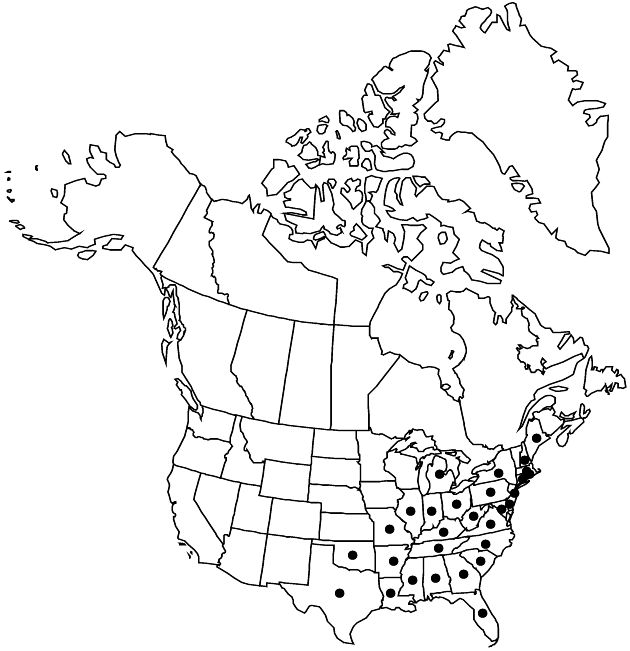Eutrochium fistulosum
Sida 21: 901. 2004.
Plants 60–350+ cm. Stems usually purple throughout, sometimes greenish or purple-spotted, hollow proximally, usually glabrous proximally (rarely pubescent toward bases when young), ± glandular-puberulent distally and among heads (glaucous throughout, at least when fresh). Leaves mostly in 4s–6s(–7s); petioles (5–)10–30(–50) mm, glabrous; blades pinnately veined, narrowly to broadly lanceolate, mostly (8–)12–25(–28) × (1.5–)2–6(–9) cm, bases gradually tapered, margins finely serrate (teeth rounded, blunt), abaxial faces sparingly and minutely ± scabrellous to glabrate, adaxial faces glabrous or sparingly puberulent. Heads in convex to rounded (dome-shaped), compound corymbiform arrays (ultimately broadly cylindric). Involucres often purplish, 6.5–9 × 2.5–5 mm. Phyllaries glabrous or outer with hairs on midveins. Florets (4–)5–7; corollas usually pale pinkish or purplish, 4.5–6 mm. Cypselae 3–4.5 mm. 2n = 20.
Phenology: Flowering late summer–early fall.
Habitat: Wet lowlands, alluvial woods, along streams, moist meadows, bogs, marshes with permanently saturated or seasonally flooded organic soils, open sun or partial shade
Elevation: 10–1400+ m
Distribution

Ala., Ark., Conn., Del., Fla., Ga., Ill., Ind., Ky., La., Maine, Md., Mass., Mich., Miss., Mo., N.H., N.J., N.Y., N.C., Ohio, Okla., Pa., R.I., S.C., Tenn., Tex., Va., W.Va.
Discussion
In the field, Eutrochium fistulosum is the most distinct species of the genus; herbarium specimens do not always document the distinguishing characteristics: heights commonly surpassing 2 m, proximal stem diameters usually 2 cm or greater, stems strongly glaucous (mostly hollow, sometimes distally hollow), leaves commonly 6 or 7 per node, arrays of heads commonly 30 × 22 cm.
Selected References
None.